Explore Yangzhou City Site: Where Culinary Delights Meet Stunning Landscapes
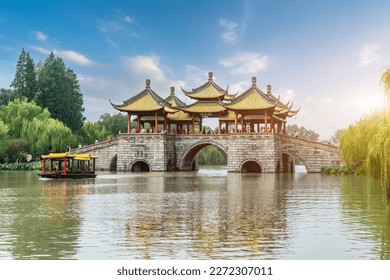
An Essential Guide to Visiting Yangzhou City Site
Nestled at the confluence of the Yangtze River and the Beijing-Hangzhou Grand Canal, Yangzhou City Site boasts a rich tapestry of history that dates back over 2,400 years. This UNESCO Creative City of Gastronomy not only tantalizes the taste buds with exquisite local dishes but also enchants visitors with its stunning landscapes, traditional gardens, and vibrant cultural heritage. The most unique feature of Yangzhou is arguably its Slender West Lake, a picturesque waterway adorned with elegant willows and ancient bridges, mirroring the beauty found in Hangzhou’s famed West Lake.
In this essential guide, we will take you on a journey through the must-see attractions, including the intricate Ge Garden and the serene He Garden, as well as the historic Daming Monastery. We’ll cover practical travel tips, transport options, and the best times to visit this charming city. Whether you are a history buff, a foodie, or simply seeking a serene escape, Yangzhou City Site is poised to offer an unforgettable experience that captures the essence of China’s rich cultural legacy. Join us as we explore the enchanting allure of Yangzhou!
In This Guide
- An Essential Guide to Visiting Yangzhou City Site
- The Rich History and Legends of Yangzhou City Site
- Main Highlights: What You Absolutely Can’t Miss
- Planning Your Visit: A Practical Guide
- Tickets: Prices, Booking, and Tips
- How to Get There: A Complete Transportation Guide
- Local Cuisine and Accommodation Nearby
- Frequently Asked Questions
- Final Thoughts on Your Trip
The Rich History and Legends of Yangzhou City Site
A Journey Through Time: The Legacy of Yangzhou City Site
Yangzhou, often referred to as the “City of Gastronomy,” offers a rich tapestry of history and culture woven through its ancient streets and waterways. With over 2,480 years of historical significance, the Yangzhou City Site is a testament to the city’s vibrant past, serving as a vital center for trade, culture, and innovation throughout several dynasties. Let’s explore the key periods and events that have shaped this remarkable city, along with the legends that continue to enchant visitors today.
Ancient Foundations: The Spring and Autumn Period
The roots of Yangzhou trace back to the Spring and Autumn Period (770-476 BC), when it was established as a strategic location along the Yangtze River. Originally known as “Yangzhou,” the city was a crucial military and commercial hub, facilitating trade routes that connected the north and south of China. This early prosperity laid the groundwork for Yangzhou’s development as a cultural melting pot.
The Flourishing of the Han Dynasty
During the Han Dynasty (206 BC-220 AD), Yangzhou experienced significant growth and cultural flourishing. The Grand Canal, which would later become one of the most important waterways in Chinese history, was constructed to facilitate trade between the northern and southern regions. This era not only solidified Yangzhou’s economic importance but also attracted scholars, poets, and artists, turning the city into a vibrant center of commerce and culture.
The Golden Age of the Tang Dynasty
The Tang Dynasty (618-907 AD) is often regarded as a golden age for Yangzhou. It became a cultural epicenter, renowned for its flourishing arts and literature. The city was famous for its refined gardens, exquisite architecture, and a bustling marketplace where merchants from across the empire convened. Legend has it that the poet Li Bai, one of China’s most celebrated literary figures, was inspired by the enchanting beauty of Yangzhou’s landscapes, penning verses that immortalized the city in Chinese literature.
The Song Dynasty and the Art of Gastronomy
As the Song Dynasty (960-1279 AD) dawned, Yangzhou transformed into a culinary haven. The city’s reputation for fine food began to spread, with local chefs innovating dishes that combined fresh ingredients and meticulous techniques. The legend of the “Squirrel-Shaped Mandarin Fish,” a dish crafted with such artistry that it appears to be swimming on the plate, emerged during this time, showcasing the city’s culinary prowess. Yangzhou’s gastronomy was recognized by UNESCO in 2019, cementing its status as a Creative City of Gastronomy.
The Ming and Qing Dynasties: A Cultural Renaissance
The Ming (1368-1644 AD) and Qing (1644-1912 AD) Dynasties marked another period of cultural renaissance in Yangzhou. The city’s gardens, such as the famous Ge Garden and He Garden, were meticulously designed, reflecting the harmony between nature and human creativity. The legend of the “Slender West Lake,” a picturesque waterway that captivates visitors today, was woven into local folklore, symbolizing the enduring beauty and tranquility of Yangzhou.
Modern Era and Preservation of Heritage
In contemporary times, Yangzhou has embraced its historical legacy while adapting to modernity. The city is committed to preserving its cultural heritage, making it a treasure trove for history buffs and travelers alike. The Yangzhou City Site stands as a monument to its storied past, inviting visitors to explore the remnants of ancient walls and structures that whisper tales of bygone eras.
Conclusion: Legends That Endure
The history of Yangzhou is not just a chronicle of events but a collection of vibrant legends that continue to shape its identity. From the ancient tales of scholars and poets to the culinary innovations that delight the palate, Yangzhou’s rich history invites travelers to delve deep into its enchanting past. As you wander through this historic city, let the stories of its glorious past inspire your journey, reminding you of the timeless beauty and cultural significance that make Yangzhou a unique destination.
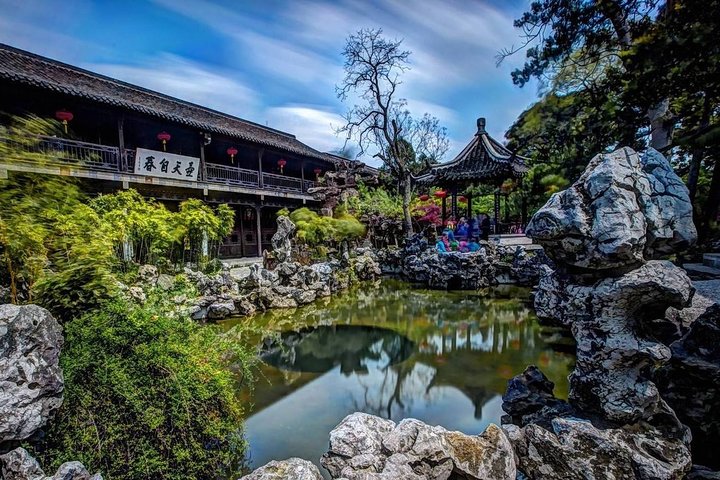
Yangzhou City Site.
Main Highlights: What You Absolutely Can’t Miss
Slender West Lake (瘦西湖)
A jewel of Yangzhou, Slender West Lake captivates visitors with its serene waters and picturesque landscapes. Stretching over 15 kilometers, this stunning lake is adorned with willow trees and traditional pavilions, offering perfect spots for leisurely strolls or peaceful boat rides. Don’t miss the iconic “Five Pavilion Bridge” and the “Yuhua Pavilion,” which provide striking views and excellent photo opportunities. For an immersive experience, consider visiting during the early morning or late afternoon when the light casts a magical glow over the lake.
Ge Garden (个园)
Step into Ge Garden, a quintessential representation of classical Chinese gardening artistry. This tranquil escape features intricate rock formations, lush greenery, and meandering paths that invite exploration. The garden’s highlight is the “Rockery,” an impressive structure that offers a panoramic view of the entire garden. Be sure to wander through the “Humble Administrator’s House,” where you can admire the exquisite craftsmanship of traditional Chinese architecture. A visit during spring or autumn will reward you with vibrant blossoms and foliage.
He Garden (何园)
He Garden is a masterpiece of traditional Suzhou-style gardens, blending natural beauty with man-made structures. This garden is famous for its elegant layout, featuring beautiful ponds, winding walkways, and charming pavilions. The “Lotus Pavilion” is particularly breathtaking when the lotus flowers bloom in summer, creating a stunning visual spectacle. Take your time to enjoy the peaceful ambiance and reflect among the koi-filled waters, which make for a perfect backdrop for contemplation or quiet conversations.
Daming Monastery (大明寺)
Rich in history and spiritual significance, Daming Monastery is a must-visit for cultural enthusiasts. Dating back over 1,500 years, this ancient Buddhist temple features impressive architecture and serene surroundings. The highlight here is the towering “Daming Pagoda,” which offers panoramic views of the surrounding area. When visiting, take time to explore the intricate carvings and murals within the temple. It’s best to visit during a weekday to avoid large crowds and truly appreciate the tranquility of the site.
Dongguan Street (东关街)
For those seeking a taste of local culture and cuisine, Dongguan Street is the place to be. This historic street is lined with quaint shops and eateries offering Yangzhou’s renowned snacks and dishes, such as Yangzhou Fried Rice and Squirrel-Shaped Mandarin Fish. Take a food tour to sample local delicacies while soaking up the vibrant atmosphere. Remember to explore the side alleys, where you might stumble upon hidden gems and traditional crafts, such as paper-cutting and lacquerware.
Yangzhou’s Waterways
Yangzhou is famed for its extensive network of waterways that weave through the city, offering unique perspectives of its scenic beauty. Consider taking a boat cruise along the Jinghang Canal, where you can admire ancient bridges and traditional houses lining the banks. The best time for a boat ride is during the sunset, when the sky reflects on the water, creating a picturesque setting. Ensure you have your camera ready, as the views are truly unforgettable.
Local Gastronomy
Yangzhou’s status as a UNESCO Creative City of Gastronomy is not to be overlooked. Don’t leave without indulging in the local culinary delights. Visit the bustling food stalls on Dongguan Street or dine at a traditional restaurant to experience dishes like Braised Meat Balls in Brown Sauce and Wensi Tofu. For breakfast, sample the popular Three-Dice Buns and Dried Beancurd Threads in Consomme. To truly appreciate the local flavors, consider joining a cooking class to learn how to prepare these dishes yourself!
Each of these highlights offers a unique glimpse into the charm and culture of Yangzhou, making your visit not just a trip, but an enriching experience.
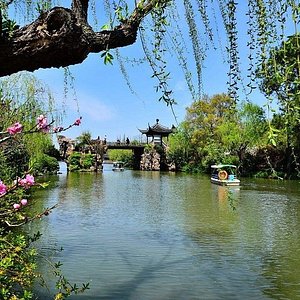
Yangzhou City Site.
Planning Your Visit: A Practical Guide
Discovering Yangzhou City Site: Your Practical Guide
Visiting Yangzhou City Site (扬州城遗址) offers an immersive glimpse into China’s rich history and culture. To make the most of your trip, here’s a practical guide to enhance your experience.
Best Time to Visit
The ideal time to explore Yangzhou is during March and April when the weather is most pleasant, featuring mild temperatures and blooming flowers. The city enjoys a subtropical monsoon climate, with the hottest month being July (averaging 27.6°C) and the coldest in January (averaging 1.7°C). To avoid the rainy season, which occurs from mid-June to late July, plan your visit in the spring or early autumn.
Recommended Itinerary
Day 1: Arrival and Local Cuisine
– Morning: Arrive at Yangzhou Taizhou Airport or Yangzhou Railway Station. Check into your accommodation.
– Afternoon: Explore the famous Dongguan Street for a taste of local snacks and specialties like Yangzhou Fried Rice and Shumai.
– Evening: Take a leisurely stroll around Slender West Lake, enjoying the serene views at sunset.
Day 2: Cultural Exploration
– Morning: Visit the Daming Monastery to take in its historical architecture and tranquil atmosphere.
– Afternoon: Head to Ge Garden, known for its exquisite landscaping and traditional Chinese garden design.
– Evening: Attend a local performance, such as Yangzhou opera, to immerse yourself in the regional culture.
Day 3: Historical Insights
– Morning: Explore the Yangzhou City Site, immersing yourself in the ancient history of the city.
– Afternoon: Visit the He Garden for a mix of natural beauty and artistic design.
– Evening: Enjoy a farewell dinner at a renowned local restaurant, savoring dishes like Squirrel-Shaped Mandarin Fish.
Photography Tips
- Best Lighting: Early mornings and late afternoons provide the best natural light, enhancing the beauty of historical sites and gardens.
- Composition: Use the waterways as natural frames for your photos, especially around Slender West Lake and the gardens.
- Details Matter: Capture the intricate details of architecture and local crafts by getting up close with your camera.
What to Wear
- Comfortable Footwear: Expect to walk a lot, especially in gardens and historical sites; wear supportive shoes.
- Layered Clothing: The weather can vary, especially in spring and autumn, so layers will help you adapt throughout the day.
- Sun Protection: Bring a hat and sunscreen, particularly if you plan to spend time outdoors.
Insider Tips
-
Local Transport: Use bicycles for rent, a popular way to explore the city and its beautiful parks. It’s eco-friendly and offers a unique perspective of Yangzhou.
-
Dining Reservations: For popular restaurants, especially those known for local cuisine, consider making reservations ahead of time to avoid long waits.
-
Cultural Engagement: Engage with local artisans on Dongguan Street to learn about traditional crafts like paper-cutting and lacquer work. Many are happy to share their stories and processes.
-
Language Barrier: While some locals may speak basic English, having a translation app or learning a few key Mandarin phrases can enhance your interactions.
-
Festival Timing: Check local calendars for festivals or events happening during your visit, such as the Yangzhou World Horticultural Exposition, to experience the city’s vibrant culture firsthand.
With this guide, you’re all set to enjoy your visit to Yangzhou City Site. Embrace the history, indulge in the local cuisine, and soak in the enchanting beauty of this UNESCO Creative City of Gastronomy!
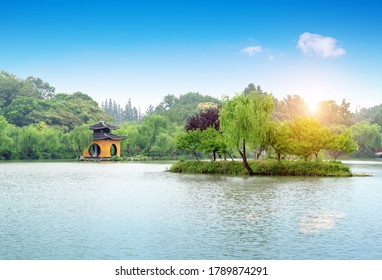
Yangzhou City Site.
Tickets: Prices, Booking, and Tips
When planning your visit to the Yangzhou City Site (扬州城遗址), it’s essential to know about ticket options, pricing, and booking methods to ensure a seamless experience. Below is a comprehensive overview to help you prepare for your visit.
Ticket Information for Yangzhou City Site
| Ticket Type | Price (CNY) | Includes |
|---|---|---|
| Adult Admission | 50 | Access to the City Site and surrounding areas |
| Student Admission | 25 | Access to the City Site (valid student ID required) |
| Senior Admission | 25 | Access to the City Site (for seniors aged 60 and above) |
| Family Package (2 Adults + 2 Children) | 120 | Access for two adults and two children (under 18) |
Booking Your Tickets
Tickets for the Yangzhou City Site can be purchased at the entrance, but to avoid long lines and ensure availability, it is highly recommended to book in advance. Here’s how you can secure your tickets:
-
Online Booking: Visit the official Yangzhou tourism website or authorized travel platforms where you can purchase tickets in advance. Look for the option that allows you to select a specific date for your visit.
-
Mobile Apps: Many Chinese travel apps offer ticketing services. If you have access to apps like Trip.com or Ctrip, they can be user-friendly options for international travelers.
-
Local Travel Agencies: If you prefer personalized assistance, consider reaching out to a local travel agency that can provide tickets as part of a guided tour.
-
In-Person Purchase: If you choose to buy your tickets on-site, arrive early to beat the crowds, especially on weekends or during holidays.
Tips for Booking
-
Book Early: The Yangzhou City Site can attract many visitors, especially during peak tourist seasons (spring and autumn). Booking your tickets at least a few days in advance can help you avoid disappointment.
-
Check for Discounts: Some platforms may offer discounts for early bookings or group purchases. Always compare prices before finalizing your purchase.
-
Keep Your ID Handy: If you’re a student or senior, make sure to have your identification ready to confirm your eligibility for reduced fares at the entrance.
By planning ahead and understanding the ticketing process, you can focus more on enjoying the rich history and beautiful landscapes of Yangzhou City Site during your visit!
How to Get There: A Complete Transportation Guide
Reaching the Historic Heart of Yangzhou
Yangzhou City Site, a treasure trove of heritage nestled in the Jiangsu province, is easily accessible from various parts of China. Whether you’re arriving from bustling metropolises or exploring the scenic landscapes of the region, this guide will help you navigate your way to this UNESCO Creative City of Gastronomy.
From the Nearest Major City
1. From Nanjing:
– By Train: The fastest way to reach Yangzhou from Nanjing is via high-speed train. Trains depart from Nanjing South Railway Station and take approximately 1 hour. Tickets range from CNY 50 to CNY 100 (USD 7 to USD 14), depending on the class.
– By Bus: Long-distance buses are also available and depart from Nanjing’s Zhongyangmen Bus Station. The journey takes about 1.5 to 2 hours and costs around CNY 40 (USD 6).
2. From Shanghai:
– By Train: High-speed trains run regularly from Shanghai Hongqiao Railway Station to Yangzhou. The trip takes about 2.5 hours with ticket prices ranging from CNY 120 to CNY 200 (USD 17 to USD 30).
– By Car: If you prefer driving, the distance from Shanghai to Yangzhou is approximately 300 kilometers (186 miles). The drive takes around 3.5 to 4 hours via the G40 Expressway, depending on traffic conditions.
3. From Beijing:
– By Train: High-speed trains from Beijing to Yangzhou are available but may require a transfer in Nanjing. Total travel time is around 6 hours, and prices vary from CNY 400 to CNY 600 (USD 57 to USD 86).
– By Flight: You can also fly into Nanjing Lukou International Airport and take a bus to Yangzhou, which typically takes about 1.5 hours.
By Air
Yangzhou Taizhou Airport (YTY) is the closest airport to Yangzhou City Site, situated about 30 kilometers (18 miles) from the city center. This airport offers daily flights to major cities, including Beijing, Shenzhen, and Xi’an. From the airport, you can take a taxi to the city center, which will take approximately 30 minutes and cost around CNY 80 (USD 11).
Alternatively, you can fly into Nanjing Lukou International Airport (NKG), which is approximately 90 kilometers (56 miles) from Yangzhou. From there, take a direct bus to Yangzhou, with a travel time of about 1.5 hours, costing around CNY 60 (USD 9).
Getting Around Yangzhou
Once you arrive in Yangzhou, exploring the city and its famous attractions is straightforward. Here’s how to navigate the local area:
1. Public Transportation:
– Buses: Yangzhou has an extensive public bus network that covers most parts of the city. Fares typically range from CNY 1 to CNY 2 (USD 0.15 to USD 0.30) per ride.
– Sightseeing Buses: Special tourist buses are available to take you to major attractions such as Slender West Lake and Ge Garden. Tickets cost around CNY 10 (USD 1.50) for a day pass.
2. Taxis:
– Taxis are widely available, with starting fares around CNY 12 (USD 1.70) for the first 3 kilometers (1.9 miles) and CNY 2.5 (USD 0.35) for each additional kilometer. Rides to popular attractions within the city usually cost between CNY 20 to CNY 50 (USD 3 to USD 7).
3. Bicycles:
– Biking is a pleasant way to explore Yangzhou, especially around the scenic areas. You can rent bicycles from various shops or use bike-sharing services, which generally cost around CNY 1 (USD 0.15) per hour.
Conclusion
With a variety of transportation options available, visiting the Yangzhou City Site is both convenient and enjoyable. Whether you prefer the speed of trains, the flexibility of a car, or the ease of public transport, you’ll find a suitable way to immerse yourself in this city’s rich cultural tapestry and delectable gastronomy. Prepare for an unforgettable journey!
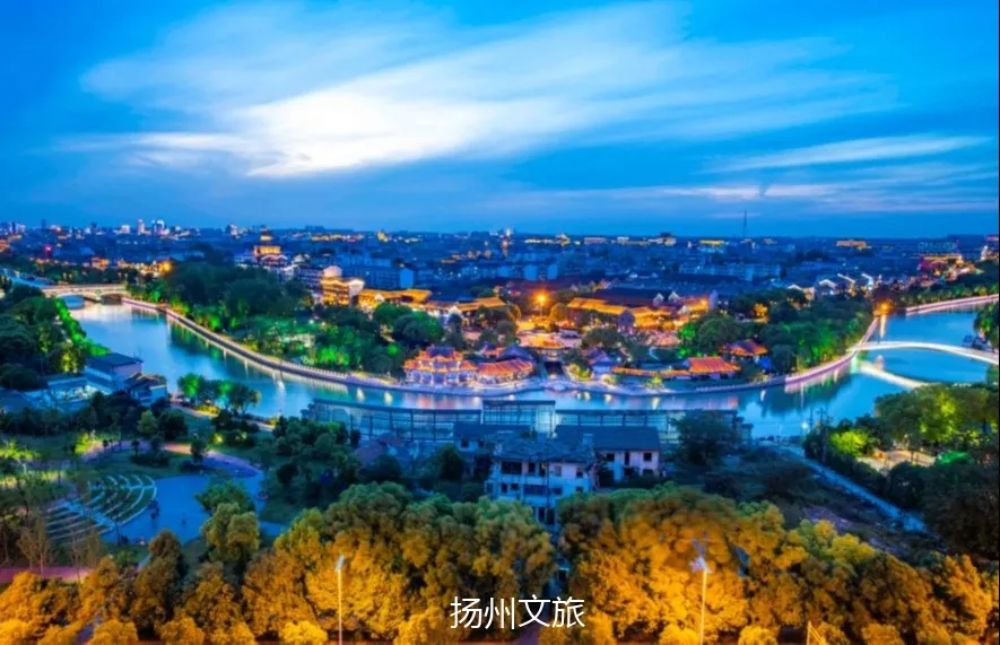
Yangzhou City Site.
Local Cuisine and Accommodation Nearby
When exploring the rich historical tapestry of Yangzhou City Site, you’ll undoubtedly want to indulge in the local gastronomy that has earned Yangzhou its UNESCO designation as a Creative City of Gastronomy. The city’s culinary scene is vibrant, showcasing exquisite flavors and time-honored recipes. Here are some must-try dishes and accommodation options to make your stay comfortable and enjoyable.
Culinary Delights
-
Yangzhou Fried Rice (扬州炒饭)
This iconic dish is a staple of Yangzhou cuisine. Made with perfectly cooked rice, it is stir-fried with a medley of ingredients including shrimp, ham, peas, and egg, all expertly seasoned. The delicate balance of flavors and textures makes it a favorite among locals and visitors alike. -
Braised Meat Balls in Brown Sauce (狮子头)
These succulent meatballs are a true comfort food. Prepared from finely minced pork, they are braised to perfection in a rich brown sauce, often served with bok choy. The dish is a great representation of Yangzhou’s emphasis on fine craftsmanship in cooking. -
Squirrel-Shaped Mandarin Fish (松鼠鳜鱼)
A visual and culinary masterpiece, this dish features a whole fish shaped like a squirrel, deep-fried to create a crispy exterior while the meat remains tender. It is typically served with a sweet and sour sauce, making it both a feast for the eyes and the palate. -
Wensi Tofu (文思豆腐)
For a lighter option, try Wensi Tofu, which consists of finely shredded tofu served in a clear broth. This dish showcases the fresh ingredients and meticulous preparation that Yangzhou cuisine is known for, providing a refreshing complement to the richer dishes.
Where to Stay
Whether you’re seeking luxury, a boutique experience, or budget-friendly options, Yangzhou offers a variety of accommodations to suit every traveler’s needs.
-
Luxury: Yulong International Hotel (扬州御龙国际酒店)
This five-star hotel provides a lavish stay with spacious rooms and exceptional amenities. Located conveniently close to major attractions, guests can enjoy fine dining options, a wellness center, and stunning views of the city. -
Boutique: The Blossom Hotel (花开酒店)
A charming boutique hotel that captures the essence of Yangzhou’s cultural heritage. With uniquely decorated rooms and personalized service, The Blossom Hotel is perfect for travelers looking for a cozy and intimate atmosphere, complete with a delightful on-site restaurant offering local dishes. -
Budget: Yangzhou Youth Hostel (扬州青年旅舍)
This budget-friendly option is ideal for backpackers and budget travelers. Located in a lively area, the hostel offers dormitory-style accommodations as well as private rooms, making it a great place to meet other travelers while exploring the local scene.
As you immerse yourself in the history and culture surrounding Yangzhou City Site, be sure to savor the incredible local cuisine and choose an accommodation that enhances your travel experience. Your journey in Yangzhou promises to be both enriching and delicious!
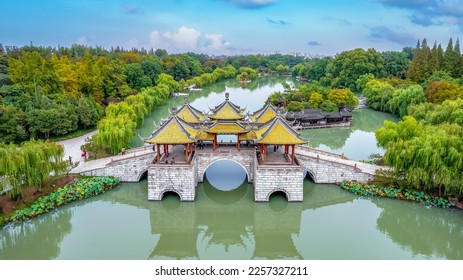
Yangzhou City Site.
Frequently Asked Questions
Frequently Asked Questions
1. Is the Yangzhou City Site suitable for children and the elderly?
Yes, the Yangzhou City Site is suitable for both children and the elderly. The area is relatively flat and accessible, making it easy to navigate. There are plenty of benches and shaded areas for rest, ensuring a comfortable visit for all age groups.
2. Are there English signs and information available at the site?
Yes, many signs and informational displays at the Yangzhou City Site are available in English, making it easier for international travelers to understand the historical context and significance of the area. Additionally, local guides may also offer tours in English.
3. How much time should I plan to visit the Yangzhou City Site?
We recommend allocating at least 1 to 2 hours to fully enjoy the Yangzhou City Site. This will give you enough time to explore the ruins, take photos, and appreciate the historical significance of the location. If you’re interested in a guided tour, you might want to plan for a longer visit.
4. What are the best times to visit the Yangzhou City Site?
The most pleasant times to visit are during the spring (March to April) and autumn (September to October) when the weather is mild and the scenery is particularly beautiful. Summers can be quite hot, and winters, while less crowded, may be chilly.
5. Is there an entrance fee for visiting the Yangzhou City Site?
Currently, there is no entrance fee to visit the Yangzhou City Site, making it an affordable option for travelers. However, it’s a good idea to check for any updates or special events that might require a ticket.
6. What amenities are available at the Yangzhou City Site?
The site offers basic amenities such as restrooms and a small information center. There are also nearby cafes and snack shops where you can purchase refreshments. Bring water and snacks if you plan to spend a longer time exploring.
7. How do I get to the Yangzhou City Site from the city center?
The Yangzhou City Site is conveniently located within the city. You can easily reach it by taxi, public bus, or on foot, depending on your location. Many local hotels also offer shuttle services or can assist in arranging transportation.
8. Are there guided tours available at the Yangzhou City Site?
Yes, guided tours are available and can greatly enhance your experience by providing in-depth historical context and insights. Many local tour companies offer options, including private and group tours, so you can choose one that fits your schedule and preferences.
Final Thoughts on Your Trip
As your journey through Yangzhou City draws to a close, you are left with a tapestry of rich history, exquisite cuisine, and breathtaking landscapes that blend seamlessly into the rhythms of everyday life. From savoring the delectable Yangzhou Fried Rice to wandering the serene paths of the Slender West Lake, every moment spent here has been an invitation to explore the depth of Chinese culture and tradition. The charming gardens, vibrant waterways, and mouthwatering dishes are not just attractions; they are stories waiting to be told, memories to be cherished.
Whether you’ve marveled at the intricate designs of Ge Garden or taken a leisurely boat ride along the Grand Canal, Yangzhou offers a unique glimpse into a city that thrives on its past while embracing the future. As a UNESCO Creative City of Gastronomy, it stands as a testament to the importance of culinary heritage and the joy of sharing food with friends and family.
As you leave Yangzhou, carry with you the warmth of its hospitality and the flavors of its cuisine. Let this enchanting city inspire your next adventure, reminding you that every journey is not just about the destination, but the experiences that shape us along the way. Until we meet again, may your travels continue to be filled with discovery and delight!